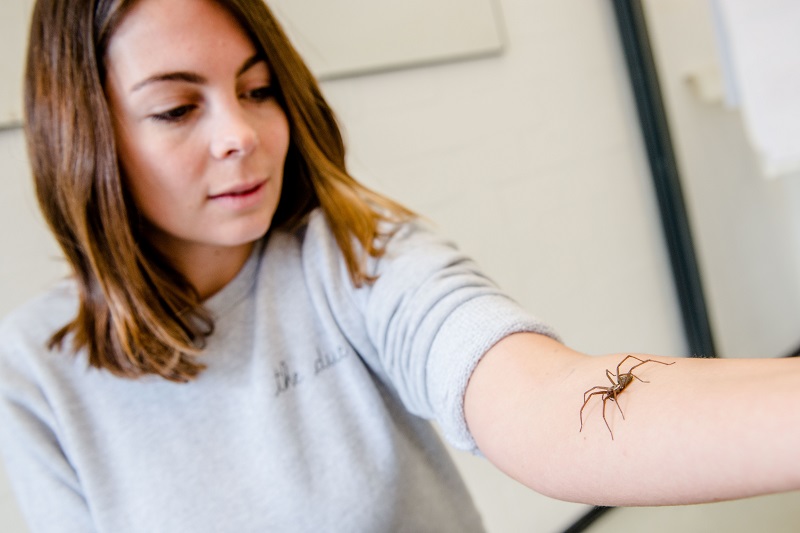
A13 – The impact of modification of stimulus-outcome contingencies on extinction and exposure in anxiety disorders
Armin Zlomuzica, Marcella Woud, Jürgen Margraf
Exposure is considered the most effective treatment option for anxiety disorders with extinction representing a central mechanism to achieve this. Exposure therapy benefit can vary considerably among patients. The principal aim of this project is to identify novel tools to optimize extinction and thus exposure-based therapy outcome in spider-fearful individuals. We will study the potential role of stress and self-efficacy enhancement on exposure-therapy outcome and generalization of treatment effects. To dissect the underlying behavioral and neuronal mechanisms, the effects of self-efficacy enhancement on differential fear conditioning with electrodermal, neuronal and subjective responses as dependent measures will be examined.
Guiding questions of A13:
- Can we modulate fear extinction and retrieval via stress and the promotion of self-efficacy in spider-fearful participants?
- Can we apply these interventions to yield more efficient and persistent reductions of avoidance behavior and fear in spider-fearful participants during and after EBT?
- Are these interventions sufficient to induce fear reductions at different fear system levels (subjective, behavioral and physiological)?
- Can we attribute the beneficial effect of SEE to a more optimized extinction learning and retrieval?
- Is SEE associated with changes in neuronal activation in specific brain regions strongly implicated in fear extinction? Is SEE reflected by specific activations of downstream pathways, that is, an increased engagement of specific prefrontal cortex subregions?

10 project-relevant publications
Labrenz F, Woud ML, Elsenbruch S, Icenhour A (2022) The good, the bad, and the ugly – chances, challenges, and clinical implications of avoidance research in psychosomatic medicine. Front. Psychiatry; 13:841734. https://doi.org/10.3389/fpsyt.2022.841734
Lipp A, Macit B, Woud ML, Dere E, Zlomuzica A (2023a) Conscious knowledge of CS-UCS contingency information affects extinction retrieval of conditioned disgust responses: findings from an online de novo disgust conditioning task. Int. J. Clin. Health. Psychol. 23(3):100368. https://doi.org/10.1016/j.ijchp.2023.100368
Lipp A, Zhang XC, Dere E, Zlomuzica A (2023b) The role of self-efficacy in specific fears. PLoS One, 24;18(3):e0283660. https://doi.org/10.1371/journal.pone.0283660
Lipp A, Zlomuzica A (2025) Differences in conditioning using unconditioned stimuli evoking fear, disgust or both emotions simultaneously. https://doi.org/10.31234/osf.io/8j7fw_v1
Macit B, Lipp A, Zlomuzica A, Engler H, Blackwell S, Würtz F, Margraf J, Woud ML (submitted) Challenging heights: Findings from a randomized controlled trial testing interpretation bias modification as an adjunct to exposure therapy for acrophobic patients. https://doi.org/10.31234/osf.io/s48aq_v1
Raeder F, Merz CJ, Margraf J, Zlomuzica A (2020) The association between fear extinction, the ability to accomplish exposure and exposure therapy outcome in specific phobia. Sci. Rep., 9;10(1):4288. https://doi.org/10.1038/s41598-020-61004-3
Raeder F, Merz CJ, Tegenthoff M, Dere E, Wolf OT, Margraf J, … Zlomuzica A (2023) Do oral contraceptives modulate the effects of stress induction on one-session exposure efficacy and generalization in women? Psychopharmacology (Berl), 240(5):1075-1089. https://doi.org/10.1007/s00213-023-06345-3
Raeder F, Heidemann F, Schedlowski M, Margraf J, Zlomuzica A (2019c) No pills, more skills: The adverse effect of hormonal contraceptive use on exposure therapy benefit. J. Psychiatr. Res. 119:95-101. https://doi.org/10.1016/j.jpsychires.2019.09.016
Raeder F, Woud ML, Schneider S, Totzeck C, Adolph D, Margraf J, Zlomuzica A (2019a) Reactivation and evaluation of mastery experiences promotes exposure benefit in height phobia. Cognitive Ther. Res., 43, 948-958. https://doi.org/10.1007/s10608-019-10018-x
Raeder F, Merz CJ, Tegenthoff M, Wolf OT, Margraf J, Zlomuzica A (2019d) Post-exposure cortisol administration does not augment the success of exposure therapy: A randomized placebo-controlled study. Psychoneuroendocrinology 99:174-182. https://doi.org/10.1016/j.psyneuen.2018.09.015




